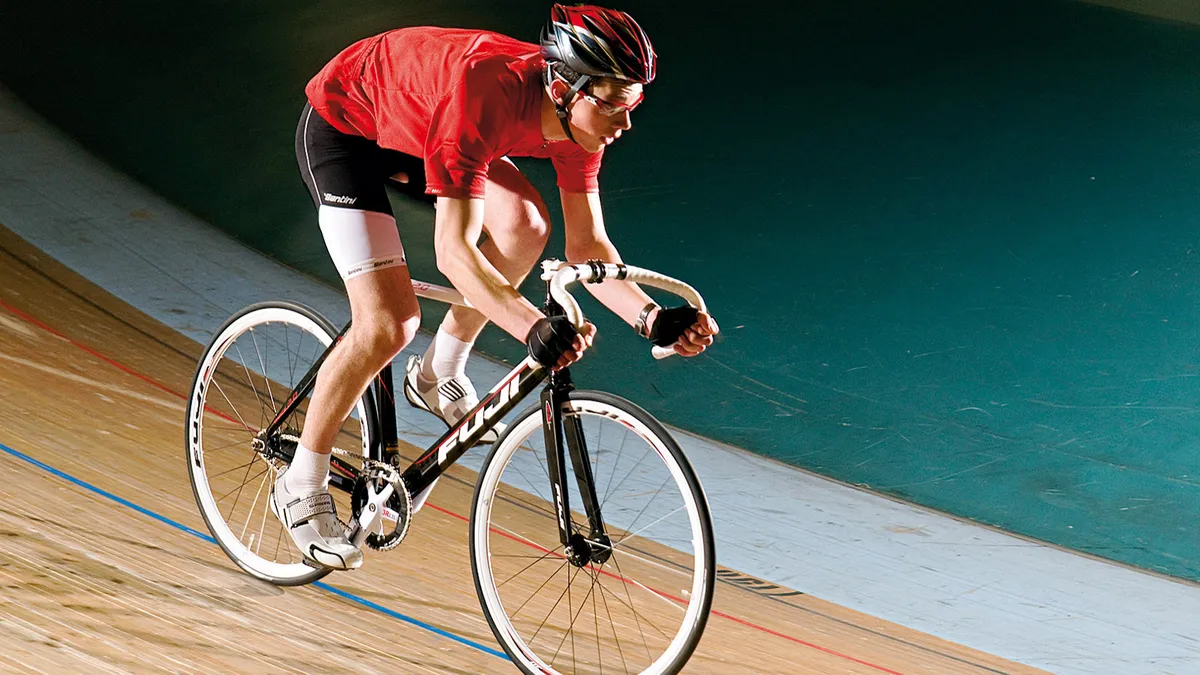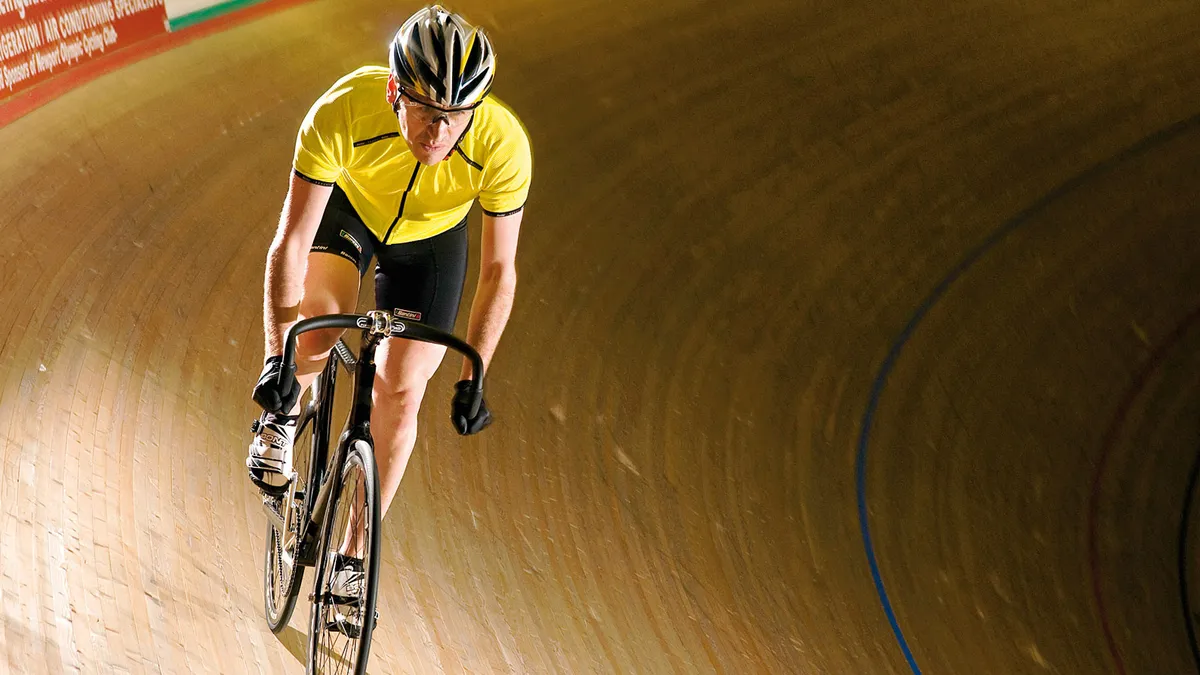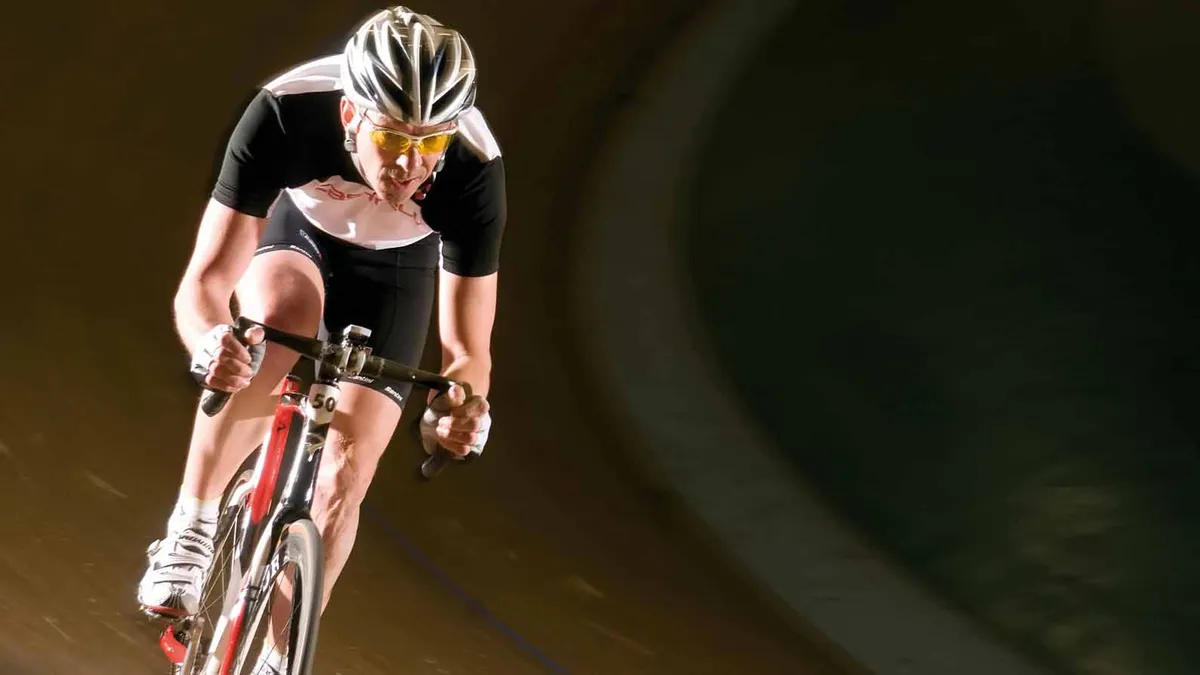Cycling is a great way of staying young – and as the BBC reported, can add years to your life – but work with your body’s changing strengths, weaknesses and nutritional needs and you’ll get better at cycling too. Here’s how...
- 6 hardcore training sessions to take your cycling to the next level
- What to eat and drink to recover from hard rides
"Regular exercise throughout life can slow and even reverse factors associated with the ageing process,” said Carlton Cooke, Carnegie Professor of Sport and Exercise at Leeds Metropolitan University.
He said too many people give up their usual exercise when they age, when what they should be doing is adapting it to suit their changing physiology and lifestyle. Here’s how to stay smiling in the saddle, whatever your age.
Cycling in your twenties
In your twenties, you’re at the ideal age for shorter races, time trials or cyclocross.

Your strengths
In your twenties you’re virtually bulletproof. Your bones are as dense as they’ll get and you’re as muscular as you’ll likely ever be. Wear your Lycra with pride and lick the competition from the race track to the sportive, even if you haven’t been doing speed work. Your fast-twitch muscle fibres, used for quick acceleration, are most plentiful in your 20s, and your VO2 max – the rate at which your muscles can use the oxygen pumping around your system – is primed.
“It’s now that you need to make the most of your super-efficient anaerobic system with high-intensity sessions lasting anything up to two hours,” said Andy Wadsworth, director of My Life PT and an elite cycling trainer. “Events you should be able to really nail in your 20s are time trials and other shorter, faster rides – think power over persistence.”
Your weaknesses
Endurance isn’t your strength now, according to Wadsworth. “I’ve seen 20-something riders suffer from burn-out because they push themselves too hard for too long – your body can’t cope with really long training rides, although you can recover quickly from shorter, higher intensity workouts," he said. "Your VO2 max capacity really won’t take you much past the 2-3 hour mark. I wouldn’t advise doing more than 30 hours training a week as an upper limit – your focus really should be on intensity, recovery and form.”
As you approach 30, don’t be surprised if you start getting aches and pains in your joints, said Dr Mark Hamer, exercise physiologist at University College London. “Shock-absorbing cartilage starts to degrade from your early 20s, and people who focus on just one activity tend to suffer muscle imbalances which put extra pressure on those joints, which then wears out the cartilage even quicker,” he said. On top of that, chondrocytes, the cartilage cells in charge of repair, decrease with age.
The food fix
“There’s a direct correlation between nutrition and performance, something most 20-somethings only learn after years of denial,” said Matt Rabin, nutritional advisor to Team Garmin-Cervélo. He recommends focusing on easily digestible carbs so you preserve your body’s protein stores, and drinking pomegranate juice after hard rides to cope with the oxidant load of high-intensity exercise. “Eat simple organic foods and wholegrain energy bars, and snack on unprocessed cashews and almonds for heart-healthy fats,” he said.
The fitness fix
Wadsworth said your 20s should be a decade of fitness foundations. “High power, high intensity short rides and training mean you’re more likely to suffer injuries because you’re less likely to ease yourself into rides,” he said. “Regularly see a physio or chiropractor if you have any niggles, and follow their advice.”
John Herety, team manager for Rapha Condor Sharp, said younger riders don’t have the ‘reference point’ older riders do. “Riders in their 30s and 40s don’t take as many chances as they know how much it hurts," Herety said. "Becoming more calculating and self-aware makes you a better rider.”
And, he said don’t discount stretching. “It’ll benefit your riding much more to do 20 minutes of stretching than an extra 20 minutes in the saddle,” he said.
Cycling in your thirties
Your thirties is the perfect decade for longer time trials, sportives and triathlons

Your strengths
Natural strength peaks in your thirties, said Wadsworth. “Over time, your body learns how to build and efficiently recruit the key muscles specific to your chosen discipline,” he said. That means that in distances of up to 100km, you can clock consistent times until you’re about 35, regardless of how you train.
The main reason 30-somethings go for longer events is physiology: “Fast-twitch muscle fibres, used for sprinting, are lost before slow-twitch fibres, making it easier for you to go for distance rather than speed as you age,” said Wadsworth.
Your weaknesses
The first signs of middle-age spread might be rearing their ugly head, but don’t blame the clock. “Metabolism slows by around two per cent a year after 30, but the biggest factor in putting on weight is less weight-bearing exercise so you lose muscle mass,” Hamer said.
It’s likely that you’ll forego resistance training sessions, and your waist might start swelling
Lean muscle burns 28 times more calories per gram than fat, he explains, and with increasing pressures on your time – work and family – it’s likely that you’ll forego resistance training sessions, and your waist might start swelling.
The food fix
Avoid upsizing your bib shorts by re-evaluating your calorie needs. On the days when you don’t ride or hit the gym, subtract 300 to 500 calories from your daily total, said Rabin. And never skip meals. “This slows your metabolism, which makes it more difficult to manage your weight,” he said.
The fitness fix
Resistance training is the answer. “Doing whole-body exercises for just 30 minutes twice a week will significantly increase the body’s natural levels of growth hormone to maintain lean body mass at the same time as burning calories,” said Wadsworth. “You’ll also strengthen smaller, supportive muscles around your joints which prevent injury, and improve your cycling efficiency by maintaining the muscle fibres you need for power in the saddle.”
Do lunges, deadlifts, squats, crunches and planks. “Variety, form and control is key – add light weights when possible, but not to the detriment of control.”
Cycling in your forties
In your forties you can put all your riding knowledge towards success in sportives.

Your strengths
Your heart rate declines around a beat a year from your twenties but this has “almost no bearing” on your performance in your forties, said Carlton Cooke. “It’s your VO2 max – how efficiently you process oxygen and feed your muscles during exercise – that’s the real determinant now. The frequency and intensity of training sessions has a positive impact, so even throwing in the occasional 30- to 60-minute quality ride can have a big impact on your VO2 max.”
Wadsworth reckons you’ll need longer to recover from harder rides and races. “Combined with more demands on your time, this may mean riding more for fun and the challenge to finish than hoping to beat any personal bests,” he said.
Your weaknesses
Your peak bone mass declines from your twenties, but in your forties it can start to nose-dive, especially in cyclists, resulting in lumbar spine, hip and knee problems. “While cycling can be beneficial in terms of reducing impact on joints, because it’s non-weight-bearing it doesn’t maintain bone mass the way running would,” said Hamer. “Without such stress, bones become prone to injury and fracture.”
Also, cycling is notorious for burning up calories, but, said Rabin, hardcore cyclists might not be eating enough to offset what they burn, depriving their bodies of bone-strengthening nutrients such as calcium and vitamin D.
“These shortfalls could also trigger physiological problems such as lower levels of oestrogen in women and testosterone in men,” he said, “hormones that can slow bone breakdown.”
The food fix
Match your calorie intake to your expenditure, but make sure they’re ‘good’ calories, Rabin said. “Oily fish such as mackerel is a great source of vitamin D to maintain bone density, as well as omega-3 and omega-6 oils for joint health – and keep snacking on nuts, seeds and fruit to maintain antioxidant intake which will be increasingly depleted as you age.”
The fitness fix
If you’re a returning cyclist, take it steady. “If you start cycling again too fast or too much, you’re inviting injuries,” said Herety. Regular cyclists need to watch out for the I’m-old-so-I’m-slow trap. Throw in some high-intensity intervals and hills to remind your muscles and your mind that you still have a fourth (or fifth) gear.
Cycling in your fifties
In your fifties you should be focusing on club riding and shorter sportives.

Your strengths
Your climbing and finishing prowess might not be what it was, but distance (and persistence) could be your joker. Dr Simon Jobson, sports scientist at the University of Kent, said the body seems to compensate for some shortfalls relating to the ageing process. “Leg bloodflow in middle-aged athletes has been shown to be around 10 to 15 per cent lower than in younger athletes,” he said, “but new research shows this reduction might be compensated by an increased ability to extract oxygen at the muscle site. And while your heart can’t pump as fast, it can maintain stroke volume by increasing cardiac filling.” Translation: you’re getting the same quantity of oxygen delivered to the muscles as you did when you were younger, but in a different way.
Older athletes may also have greater fatigue resistance, said Jobson. “Consistent and regular training does seem to provide fitness benefits which can continue well into the fifties, which can counter the inevitable decline in muscle mass with age,” he said.
Your weaknesses
Your bones are still very much moving targets on the endangered list during this decade. Testosterone levels and bone density decrease 0.4-0.75 percent annually from age 45. By age 80, men (and women) have lost approximately 20 percent of their bone mass. But cycling could be the perfect antidote.
If your muscles are stronger you’re less likely to fall and break a bone
“Osteoporosis isn’t exclusively about the quality of bone,” said Cooke, “it’s also about the quality of muscle surrounding and supporting the bone. If your muscles are built up and stronger you’re less likely to fall and break a bone, no matter what state the bone itself is in. The fact of the matter is that you will have accidents if you ride regularly, and you’ll get back to cycling in half the time if you maintain muscle and bone strength.”
The food fix
You might have the mental strength to push on through – perhaps even more than in your youth – but you need the fuel delivery to the muscles to get there. One mineral that is particularly important in delivering oxygen to the muscles to be burnt is iron – and even a mild deficiency in the mineral can have a negative impact on your stamina.
“It’s a vital mineral used in the transport of oxygen,” said Claire Lane, exercise physiologist at Bath University. “The longer you exercise, the higher the rate of red blood cell production and the greater the need for iron.” Don’t limit calorie intake while upping any training regime, as this will severely restrict iron intake.
Rabin also advises any cyclists over 50 to take the antioxidant Coenzyme Q10, which he said may improve energy levels, improve flexibility and general vitality. “It’s much easier to stay healthy than it is to recover from injuries,” he said, “especially as you age.”
The exercise fix
Nerve conduction and reflexes slow down as we age, and unfortunately for older athletes this can translate to deteriorating balance and accidents, said Hamer.
Pilates, the Alexander Technique and yoga can all work wonders in training and maintaining the neural system, he said. “Work on your proprioception – your ability to know where your limbs are without looking – by standing on one foot with your eyes closed and doing slow single-leg squats and toe-touches," he said.
All core exercise work will help shore up the muscular corset around your midriff responsible for keeping your back in position as you age. Keep this strong and your pedalling will stay efficient, too.
“Whatever you do, don’t slow down your pedal cadence,” said Wadsworth. “People in their fifties think riding in bigger gears will take the strain off their hearts, which in isolation is true, but you’ll be putting extra strain on the joints and ligaments and in turn your back, so keep cadence around 80 to 90rpm.”


